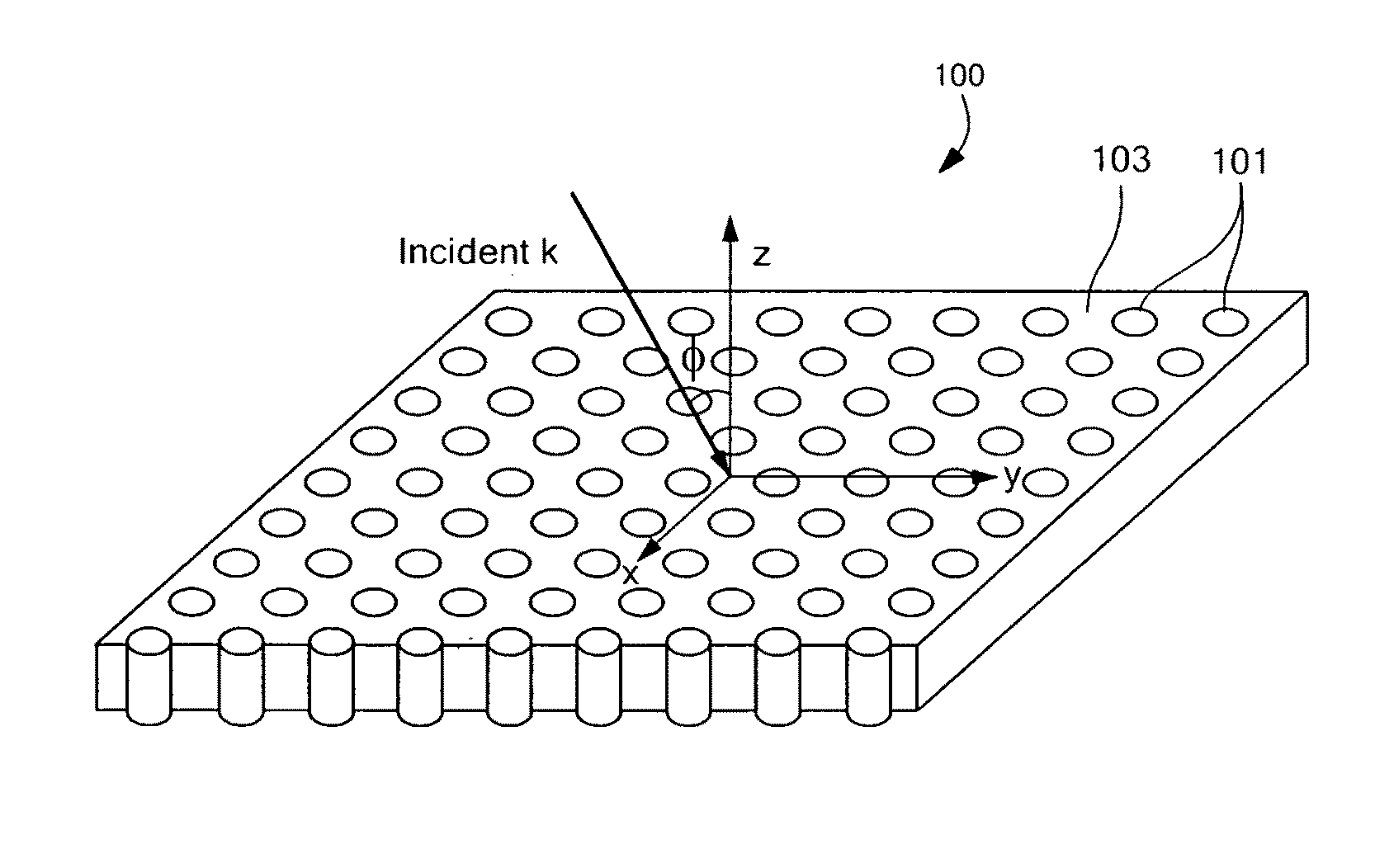Anisotropic metal-dielectric metamaterials for broadband all-angle negative refraction and superlens imaging
- Summary
- Abstract
- Description
- Claims
- Application Information
AI Technical Summary
Benefits of technology
Problems solved by technology
Method used
Image
Examples
Embodiment Construction
[0030]FIG. 1 illustrates a slab of a composite material 100 comprising a plurality of cylindrical metal rods or wires 101 embedded in a dielectric host medium 103. Using the effective medium theory (EMT), the optical properties of a composite metal-dielectric structure can be modeled. These anisotropic media have two surface plasmon resonances (SPR): a longitudinal SPR and a transverse SPR. For wavelength larger than that of the longitudinal SPR, these media are negative index metamaterials and can be used for flat lens and superlens imaging in the frequency range from the deep-infrared to the ultraviolet. Negative refraction and superlens imaging are possible due to the anisotropic optical properties. These structures do not need to be periodic. Disordered systems can also be used for negative refraction.
[0031]Considering a metal with Re εma. In the long wavelength limit, one has the Bruggeman's EMT:
0=fɛm-ɛeffɛm+Dɛeff+(1-f)ɛa-ɛeffɛa+Dɛeff(1)
[0032]Here, f is the metal filling ratio,...
PUM
 Login to View More
Login to View More Abstract
Description
Claims
Application Information
 Login to View More
Login to View More - R&D
- Intellectual Property
- Life Sciences
- Materials
- Tech Scout
- Unparalleled Data Quality
- Higher Quality Content
- 60% Fewer Hallucinations
Browse by: Latest US Patents, China's latest patents, Technical Efficacy Thesaurus, Application Domain, Technology Topic, Popular Technical Reports.
© 2025 PatSnap. All rights reserved.Legal|Privacy policy|Modern Slavery Act Transparency Statement|Sitemap|About US| Contact US: help@patsnap.com



